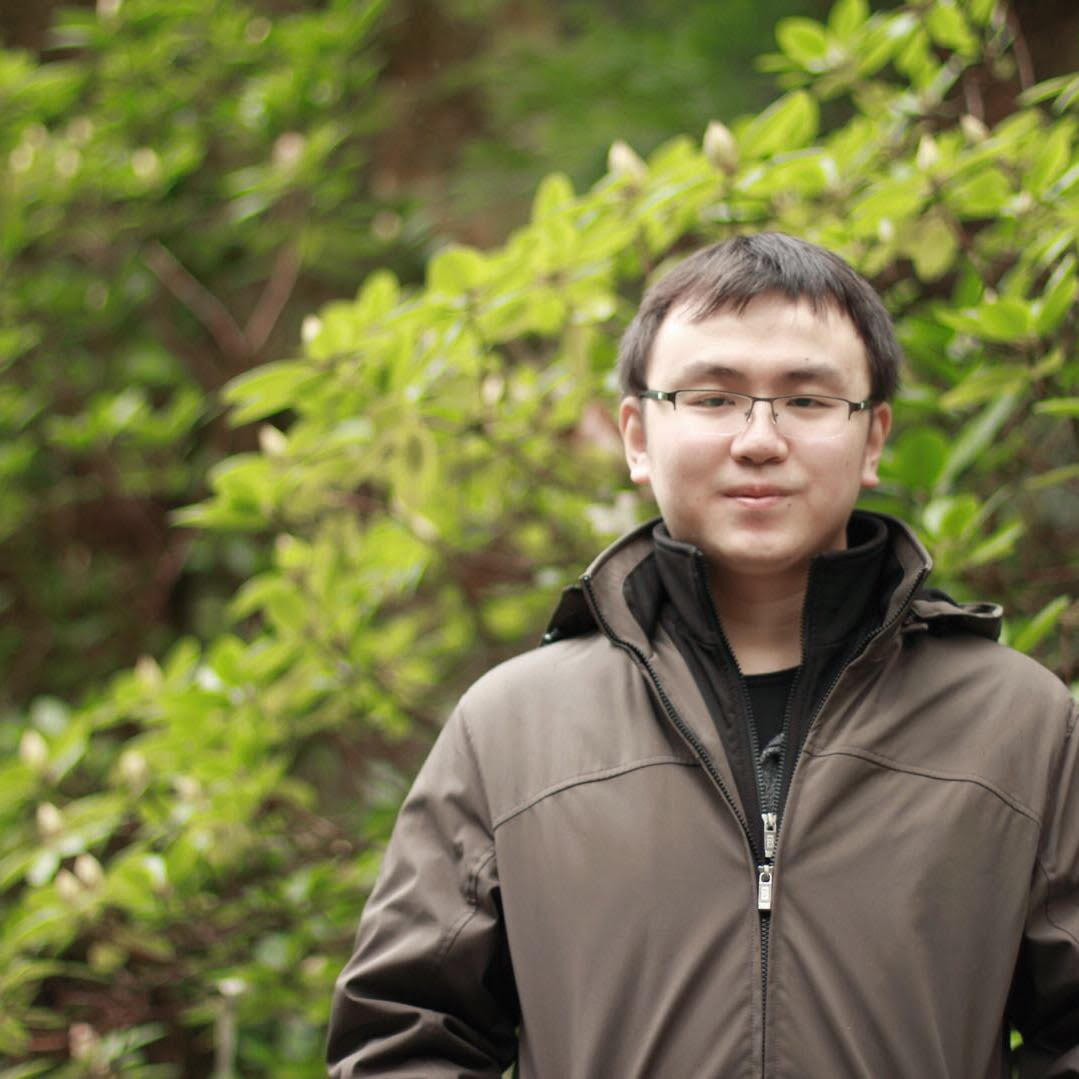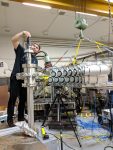CENTAUR Directors:
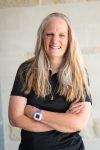 Prof. Sherry J. Yennello
Prof. Sherry J. Yennello
Director of CENTAUR and Professor of Chemistry at Texas A&M University
Website
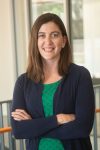 Lauren McIntosh
Lauren McIntosh
Managing Director & Science Coordinator and Assistant Research Scientist at Texas A&M University
As the Managing Director of CENTAUR, McIntosh facilitates collaboration between the institutions and manages activities and meetings for the center. Outside of CENTAUR, McIntosh studies questions of the density-dependence of the nuclear equation of state and other astrophysically-relevant questions experimentally with the Yennello group. She is also involved in developing isotope production capabilities at Texas A&M.
CENTAUR Faculty:
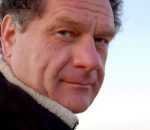 |
Aurel Bulgac
Website
Professor of Physics
University of Washington, Seattle
Dr. Bulgac studies static and non-equilibrium dynamics of quantum many-body systems, typically strongly interacting fermions. Physical systems include atomic nuclei, the crust of neutron star crust, cold atom systems. Physical phenomena range from ground and excited state properties of such systems, energy density functionals, equation of state, thermodynamic properties, nuclear reactions, real-time fission dynamics, quantized vortices, their generation and their dynamics, incipient stages of quantum turbulence in fermionic superfluids. He develops and uses static and time-dependent density functional theory extended to fermionic superfluids, quantum Monte Carlo methods and other theoretical approaches, as well as their numerical implementation. Numerical calculations are performed typically on leading edge supercomputers, such a Summit (#1 on TOP 500) and Titan (#9 on TOP 500) at ORNL, Piz Daint (#5 on TOP 500), at Swiss national Supercomputer Center, Lugano, Switzerland, and Tsubame at Tokyo Institute of Technology, Japan. His group uses GPUs programmed with CUDA on these supercomputers in order to perform calculations on these supercomputers as close as possible to their peak capabilities. Many details can be inferred from his publication list and personal web page, where one can find links to talks, many videos, codes, and other pertinent information. |
 |
Sergio Almaraz-Calderon
Website
Assistant Professor of Physics
Florida State University
Dr.Calderon's research focuses on the study of nuclear interactions and how they influence astrophysical processes. His research interests include nuclear structure, nuclear reactions, nuclear astrophysics, stable and radioactive ion beams, and detector development. |
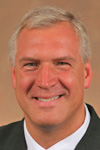 |
Paul Cottle Website Professor of Physics Florida State UniversityPaul Cottle is a professor of physics at Florida State University whose research field is experimental nuclear structure physics. He earned his Ph.D. in physics from Yale in 1986 and joined the Physics Department faculty at Florida State University that same year as an Assistant Professor. Cottle received the Presidential Young Investigator Award in 1987 and became a full professor in 1994. Cottle was elected to the chair line of the American Physical Society Forum on Education in 2011 and served as Forum chair in 2013. He was also a member of the society’s Committee on Education from 2012 to 2014, serving as chair 2013-2014. He was elected a Fellow of the APS by the Forum on Education in 2012. Cottle continues to perform experimental nuclear structure research both at FSU’s Fox Superconducting Accelerator Laboratory and at the National Superconducting Cyclotron Laboratory. Cottle is also working to improve the preparation of Florida’s high school students for college majors in fields like engineering, computer science and physics. He has collaborated with teachers, counselors and school district staff and board members in Bay, Monroe and Orange Counties in Florida. In Bay County (which includes Panama City), the number of high school students taking physics has increased by a factor of five since 2015. As part of his work in Bay County, Cottle helps organize a CENTAUR-funded nuclear science summer camp for middle and high school students. |
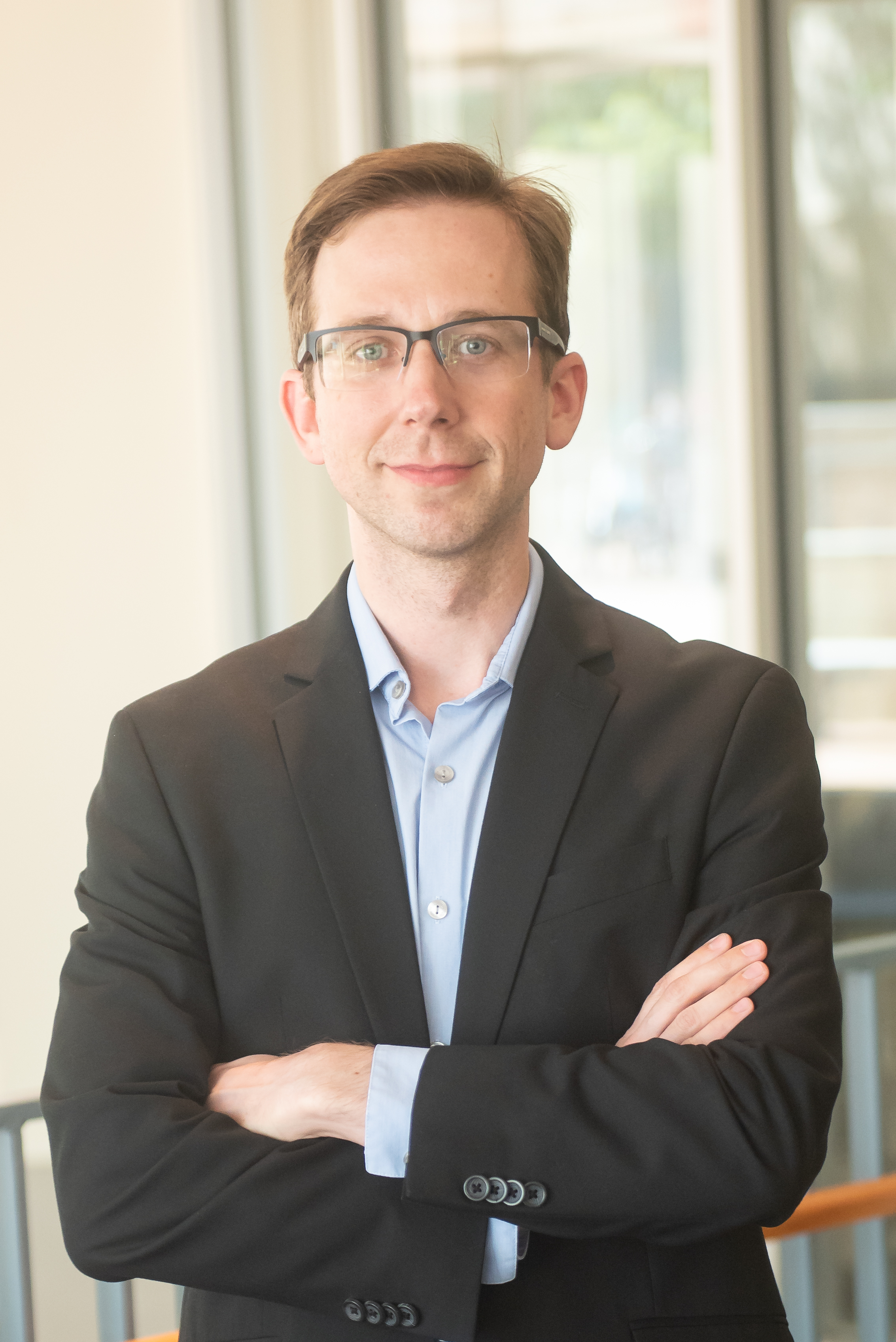 |
Jeremy Holt
Website
Assistant Professor of Physics
Texas A&M University
Microscopic nuclear structure and reaction theory has undergone a major transformation in the last decade with the development of chiral effective field theory, the low-energy realization of quantum chromodynamics. My research program utilizes "next-to-first principles" chiral two- and three-body forces to derive nucleon single-particle properties (momentum- and density-dependent isoscalar and isovector optical potentials, effective masses, and spectral functions) in order to improve modeling of neutron-capture reaction rates in r-process nucleosynthesis and particle transport in experimental heavy-ion collisions. |
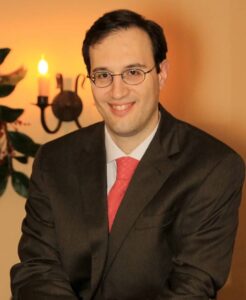 |
Miguel Madurga
Website
Assistant Professor of Physics, University of Tennessee Knoxville
Dr. Miguel Madurga research interest lies in the nuclear properties of nuclei with extreme neutron-proton imbalances. The atomic nucleus offers a unique problem in fundamental physics, being the smallest system self- bound by the strong force. In the field of low energy nuclear physics we explore the properties nuclear force between nucleons. The strong dependency of the nuclear force to the exact composition of neutron and protons observationally supports it being an effective (or dressed) interaction derived from the strong force. By studying the nuclear structure of light neutron rich nuclei close to the neutron drip line, at the most extreme neutron to proton ratios we can therefore study the nuclear interaction in the most “demanding” conditions. In Dr. Madurga’s most recent work: the decay to quasi-single particle states in 133Sn was investigated; the presence of isomeric states in neutron rich Mg isotopes was used to deduce the limits of the N=20 and N=28 islands of inversion. |
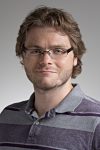 |
Scott Marley
Website
Assistant Professor of Physics
Louisiana State University
Prof. Marley is an experimental nuclear physicist interested the structure and decay properties of unstable atomic nuclei. Joined by a CENTAUR-supported graduate student, Marley will use transfer reaction experiments to study the structure of light-mass isotopes at the limits of β-stability. The group aims to improve knowledge of trends in the structure of light nuclei moving toward less bound systems and to test the most modern theoretical approaches to the nuclear many-body problem. |
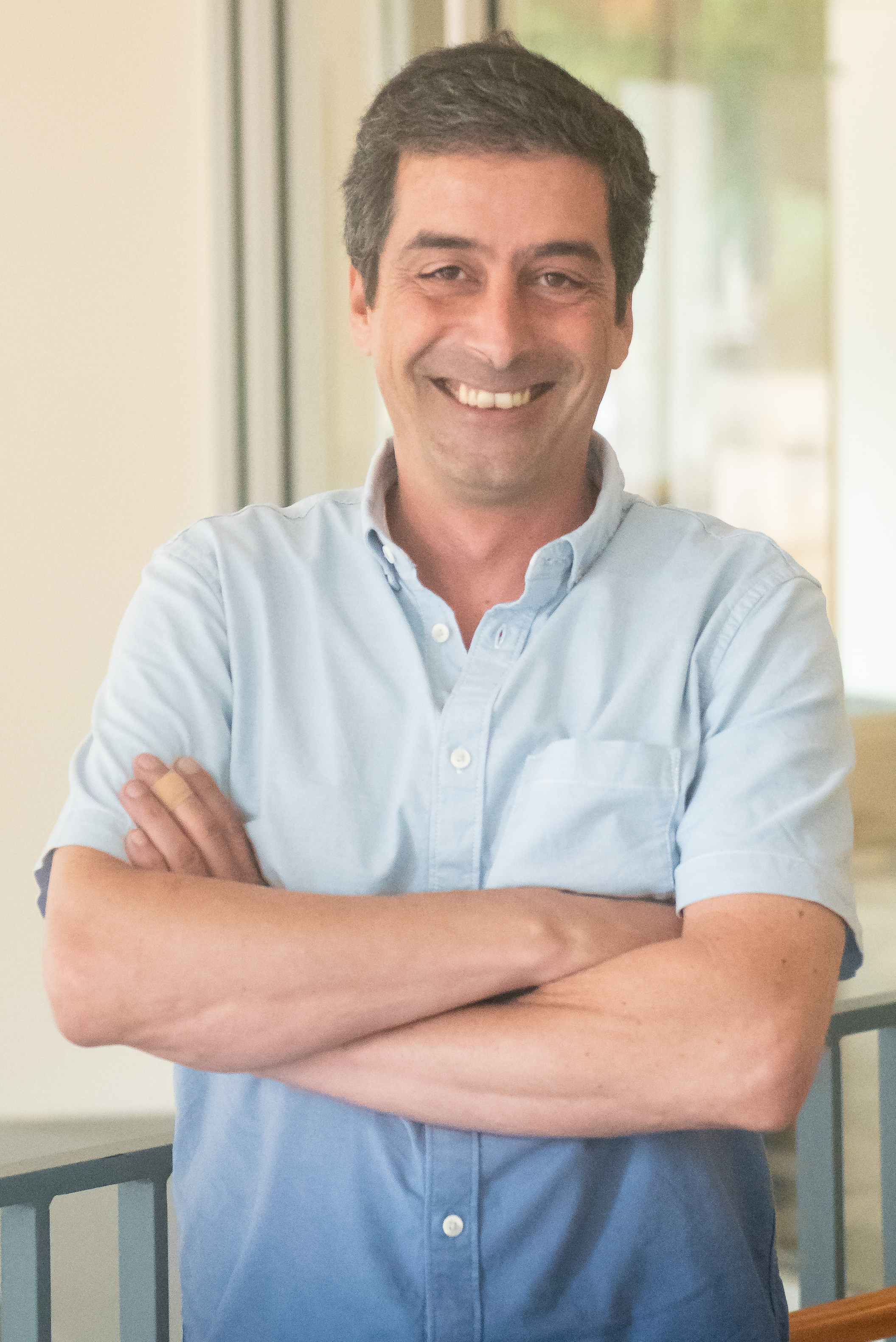 |
Dan Melconian Website Associate Professor of Physics Texas A&M University, College StationPrecision measurements of the decays of radioactive nuclei produced by the cyclotrons are a powerful probe of the fundamental forces governing our universe. Using elegant techniques in "table-top" experiments both locally at the Cyclotron Institute as well as at other laboratories, our group aims to complement the efforts of our colleagues at larger facilities (such as the Large Hadron Collider) to search for physics beyond our current understanding as encapsulated in the Standard Model of particle physics.Some of the main projects being pursued include measuring decay properties of unstable nuclei (lifetimes, branching ratios and masses) and angular distributions of the decay products of atoms and ions confined in magneto-optical and Penning traps. Our main endeavour within CENTAUR, with collaborators from Lawrence Livermore and Argonne National Laboratories, aims to improve our knowledge of how many fissions occur in a chain reaction. In particular, the fission products 147Nd and 156Eu (along with other long-lived isotopes) play a crucial role in science-based stockpile stewardship and nuclear forensics. The uncertainties on the γ-branching ratios measured for these isotopes currently compromise the usefulness of the existing data, which is what we are working to remedy. The γ-ray branching ratios of 147Nd and 156Eu are known to only 8%, hence leading to an 8% uncertainty in the fission-chain yield. The absolute γ-ray branching ratios for 147Nd and 156Eu are needed to 1–2% precision for national-security applications and to greatly improve the precision and reliability with which the number of fissions can be determined. |
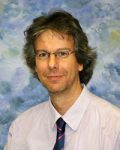 |
Ralf Rapp
Website
Professor of Physics
Texas A&M University
Photons emitted in heavy-ion collisions are particularly valuable probes to study the properties of the strongly interacting matter formed in heavy-ion collisions: once produced, they can escape the nuclear fireball without rescattering and thus probe its inner hot and dense regions. We will first compute the thermal photon emission rates for the temperatures and densities relevant for heavy-ion collisions in the Fermi energy regime. We will then implement these rates into transport calculations for the evolution of the fireball, by extracting local temperatures and densities. The calculated spectra will be compared to experiments to deduce the temperatures and densities reached in these reactions, and how the matter properties change as its isospin concentration is varied. |
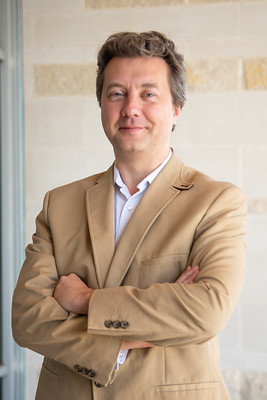 |
Grigory Rogachev
Website
Department of Physics & Astronomy, Texas A&M University
Grigory Rogachev is specializing in low energy experimental nuclear physics and nuclear astrophysics. He is doing research related to structure of light and medium mass nuclei, in particular structure of exotic neutron-rich and neutron-deficient isotopes, clustering phenomena in nuclei, mechanisms of nuclear reactions, applications of nuclear physics methods for determining rates of nuclear reactions that drive nucleosynthesis and energy generation in stellar environment. Grigory Rogachev graduated from Moscow Engineering Physics Institute (State University) in 1996 with Master of Science degree in Experimental Nuclear Physics. From 1996 to 1999 Grigory Rogachev was a Research Assistant at the National Research Center "Kurchatov Institute" where he received his Ph.D. degree in 1999. From 2000 to 2004 he was associated with the University of Notre Dame, first as a Ph.D. Research Associate and later as a Research Assistant Professor (2003-2004). In summer of 2004 Grigory Rogachev joined Department of Physics at Florida State University as an Assistant Professor. In 2010 he was tenured and promoted to an Associate Professor. In summer of 2013 he joined faculty at the Department of Physics and Astronomy and Cyclotron Institute at Texas A&M University. |
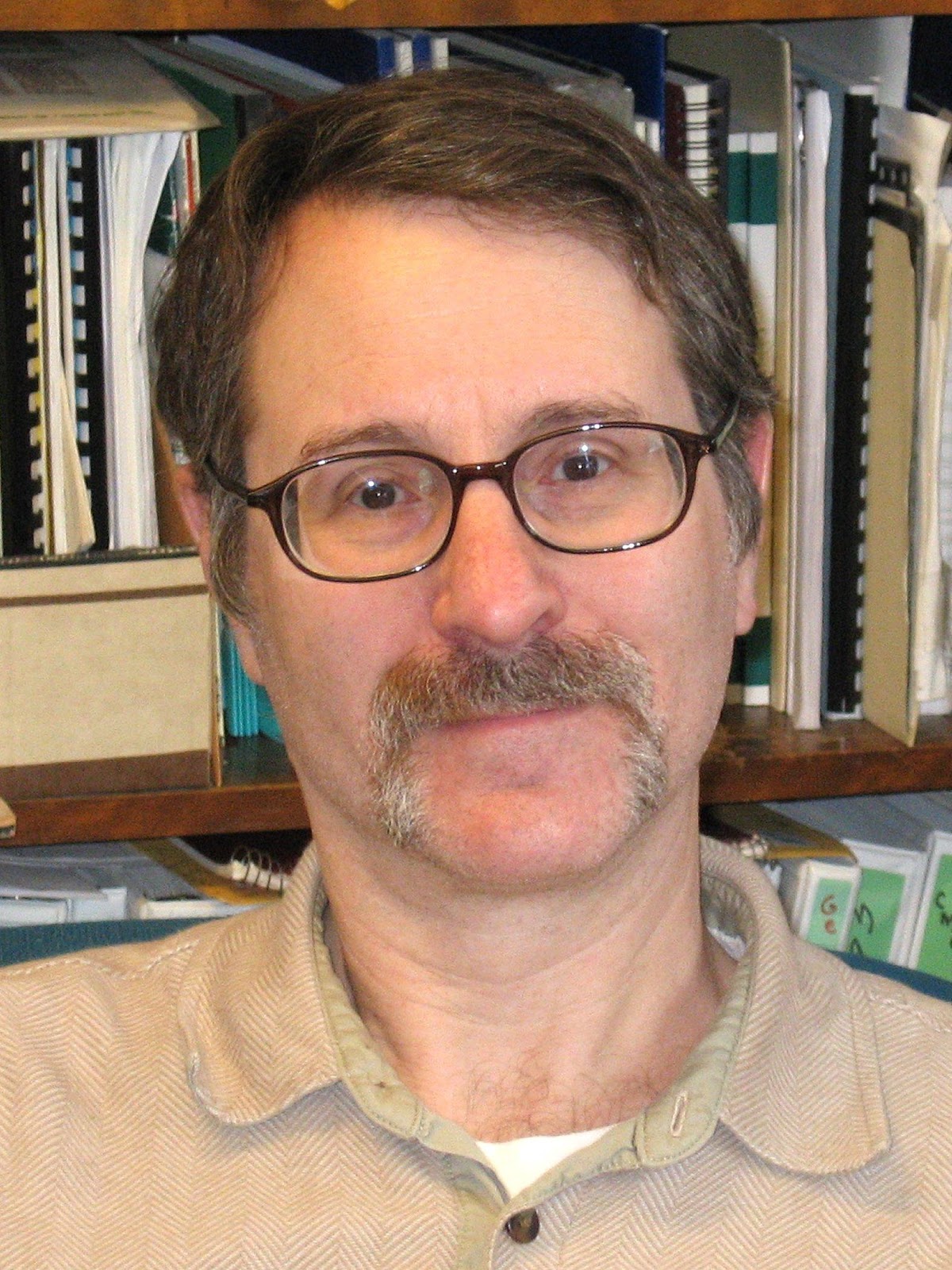
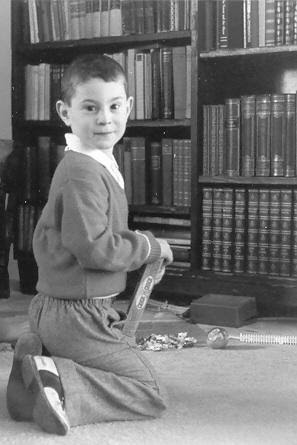 |
Lee Sobotka
Website
Professor of Chemistry and Physics
Dr. Sobotka’s received his Ph.D. from the university of California-Berkeley in 1982 and joined the faculty at Washington University in 1984 and has remained there ever since as a professor of both chemistry and physics. His research interests include: the deexcitation modes of highly excited or exotic nuclei; the continuum structure of light nuclei; dynamics of nuclear fusion and fission; the asymmetry dependence nucleon correlations inside of nuclei; the asymmetry dependence of the equation of state of nuclear matter; advanced radiation detectors and associated electronics including ASIC design. He has worked at over 20 different accelerator or reactor laboratories. Early in his career he won a Presidential Young investigator Award and has since won the Glenn Seaborg Award for Nuclear Chemistry from the ACS and he is a fellow of the APS. |
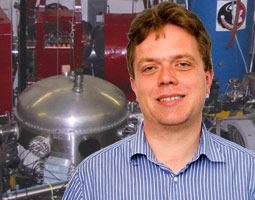 |
Ingo Wiedenhöver
Website
Professor of Physics, Florida State University
Director, John D. Fox Accelerator Laboratory
Ingo Wiedenhöver received his Ph.D. from the Universität zu Köln (Germany) in 1995, in the field of experimental nuclear physics. He worked as a Postdoctoral researcher at Argonne National Laboratory and a Research Assistant Professor at the National Superconducting Cyclotron Laboratory of Michigan State University. In 2001 he joined the faculty at the Physics Department of Florida State University, where he is now a full Professor. He received an “Outstanding Junior Investigator” award with the U.S. Department of Energy in 2002. He has been the director of the John D. Fox accelerator laboratory at FSU since 2017. His research is focused on the structure of exotic nuclei and nuclear astrophysics, performing experiments at National Laboratories and at FSU. He developed the in-flight exotic beam facility RESOLUT at the John D. Fox laboratory, which is used for research in Nuclear Astrophysics. He also works on improving the experimental methods for such experiments, in particular with the active-target detector ANASEN and neutron-detectors. He has also re-commissioned the Super-Enge Split-Pole spectrograph for high-resolution particle spectroscopy at the FSU laboratory. He has supervised the research of ten Ph.D. graduates. |
CENTAUR Post-Doctoral Researchers:
CENTAUR Students:

Arthur Alvarez
Arthur Alvarez is a physics graduate student at Texas A&M University, working under Dr. Sherry Yennello at the Cyclotron Institute. His research involves studying (d,p) reactions, specifically 54Fe(d,pg)55Fe, and obtaining the resulting photon strength function which is a key ingredient in models of neutron capture. This has impacts on nucleosynthesis, stockpile science, and advanced reactor design. His other interests are in optical physics and astrophysics.
CENTAUR Alumni:
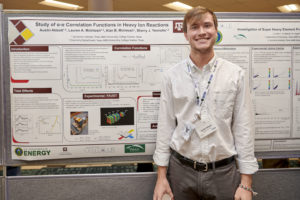
Austin Abbott
Austin Abbott was a graduate student at Texas A&M University who works under Dr. Sherry Yennello at the TAMU Cyclotron Institute. His research involved studying (d,p) reactions as a surrogate for (n,γ) reactions, specifically that of 59Fe(d,p)60Fe, and measuring the resulting γ-ray strength function which will help to constrain astrophysical models for processes in nucleosynthesis. Other research interests include alpha-alpha correlation functions in heavy ion collisions.You can download a poster of Abbott's research.
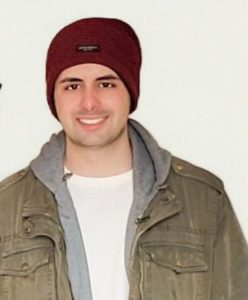 Ibrahim Abdurrahman
Ibrahim Abdurrahman
Ibrahim Abdurrahman was a graduate student at the University of Washington working under Professor Aurel Bulgac. His research focuses on understanding nuclear dynamics, such as collisions or fission, using microscopic approaches. Currently we are completing projects involving the fission of 236U and the collision of two 238U nuclei. You can download a poster of Abdurrahman's research.
 Eric Aboud
Eric Aboud
I joined Lawrence Livermore National Laboratory as a Postdoctoral Researcher in the Nuclear Criticality Safety Division in January 2022. My research agenda includes integral experiment studies using plutonium and low-temperature uranium variations of the Tex array as well as detector development and support measurements for nuclear data.
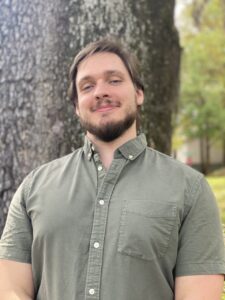 Ben Asher
Ben Asher
Ben Asher is a postdoctoral research associate of the University of Tennessee Knoxville. As a member of Dr. Miguel Madurga’s research group, he works with Florida State University in developing an ion source to deliver tritium beams for nuclear reaction studies. Ben completed his PhD from FSU in 2021; his graduate research focused primarily on designing, constructing, and experimenting with the ‘Encore’ active target detector, exploring the effect of light exotic nuclei in the fusion process.
 |
Brittany Abromeit
Brittany Abromeit was a graduate research assistant with Dr. Sam Tabor, director of the accelerator laboratory at Florida State University. Abromeit's studies included the nuclear structure of 39Ar and 39P using gamma spectroscopy, at the John D. Fox Superconducting Linear Accelerator Laboratory and the National Superconducting Cyclotron Laboratory at Michigan State University. You can also download a poster on Abromeit's Research. Currently, she is a post-doctoral researcher in the Detection Systems group in the National Security Directorate at the Pacific Northwest National Laboratory, Washington. |
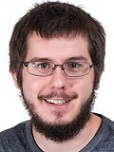 Caleb Benetti
Caleb Benetti
Caleb Benetti was a graduate research assistant working under Dr. Sam Tabor on gamma ray spectroscopy and nuclear structure at The John D. Fox Superconducting Linear Accelerator Laboratory at Florida State. Isotopes of interest are 37Ar and 29Si, with and ongoing program for gamma tagging of decay fragments in induced fission of 242Pu. He is involved in the building and commissioning of the Clarion2 HPGe array. You can download a poster of Benetti's research.
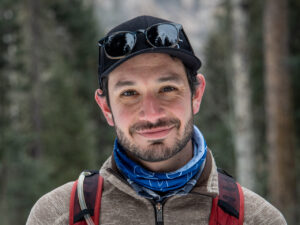 Eames Bennett
Eames Bennett
Eames joined Los Alamos National Laboratory as a Postdoctoral Research Associate in September 2020 to work on the Chi-Nu experiment at the Los Alamos Neutron Science Center. His research currently centers on making measurements of the prompt fission neutron spectra of various actinides. In addition to this, Eames has been working with Keegan Kelly to develop a next-generation highly-segmented dual neutron-gamma detector array to measure neutron scattering cross sections and angular distributions. Eames earned his PhD at Texas A&M University's Cyclotron Institute as part of the Center for Excellence in Nuclear Training and University-based Research program. While there, he helped commission the TIARA for Texas detector array, made indirect measurements of astrophysically-relevant nuclear reactions, and helped design and build a prototype novel penning trap for use at the TAMUTRAP facility. He also holds a MS in physics from Texas A&M University as well as a BA in physics from Bard College. In his spare time, Eames enjoys cycling, photography, hiking with his dog, and backpacking. You can download a poster of Bennett's research.

Alexandra Bosh
After leaving TAMU Alexandra joined the United States Navy signing a contract to become a nuclear trained surface warfare officer. Currently she is attending Officer Candidate School. Upon graduation she will be commissioning as an officer then headed off to Rota, Spain to gain her SWO qualifications on the DDG 51 Arleigh Burke. After completion of her qualifications Alexandra will be headed off to Nuclear Power School for training on how to operate and maintain the nuclear reactors on board the nuclear powered surface ships of the Navy.
 Kyle Godbey
Kyle Godbey
Kyle is currently a postdoctoral research associate at FRIB pursuing real-time microscopic descriptions of nuclear dynamics. Kyle's interests span from light element nucleosynthesis through the formation and subsequent fission of superheavy elements with a strong emphasis being placed on high-performance computing applications to nuclear physics.
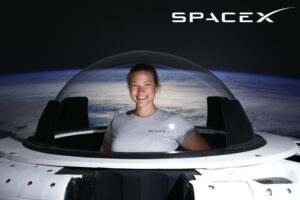 Ashley Hood
Ashley Hood
Ashley Hood joined CENTAUR as a postdoctoral research associate. She studied multinucleon transfer reactions with the Yennello group at the Cyclotron Institute. Before joining CENTAUR, she earned her Ph. D. in 2019 from Louisiana State University, where her dissertation research focused on experimental measurements of fusion reaction cross sections. Hood now works as a Test Engineer at the SpaceX Rocket Development Facility in McGregor, TX. She currently tests the Draco rockets, which are mounted on the Dragon capsules and used in-space for orbital maneuvers and docking with the International Space Station. She has found that her experimental experience translates well into test engineering and is enjoying the challenge of working with hypergolic propellants and learning rocket science.
Graduate Student in Physics at the University of Washington
Shi Jin was a graduate research assistant with Professor Aurel Bulgac in the Department of Physics at University of Washington. Shi’s research included the theoretical study of nuclear structure and dynamics using the density functional theory (DFT) and its time-dependent extension (TDDFT). His current project is the simulations of fission dynamics with TDDFT. He has gone on to a new job at Amazon. You can download a poster on Jin's research.
 Rachel Malecek
Rachel MalecekRachel Malecek was a graduate research assistant with Prof. Scott Marley. Malecek is interested in studying the structure and decay properties of light-mass, unstable atomic nuclei with transfer reaction experiments then testing modern theoretical approaches to the nuclear many-body problem. You can download a poster on Malecek's research.
.
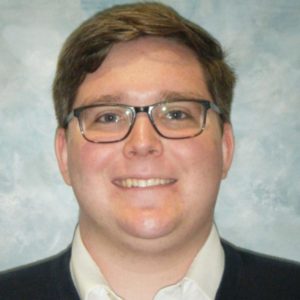 David McClain
David McClain
Ashton Morelock
Ashton Morelock was a graduate research assistant at Florida State University working with Dr. Sergio Almaraz-Calderon. During her Ph.D., she focused on neutron spectroscopy studies of (3He,n) and (d,n) reactions relevant to nuclear astrophysics using the CATRiNA neutron detector array. Ashton is currently a postdoctoral research associate with the University of Tennessee Knoxville working with Dr. Miguel Madurga. She is stationed at Florida State University to develop and utilize an ion source capable of producing triton beams.
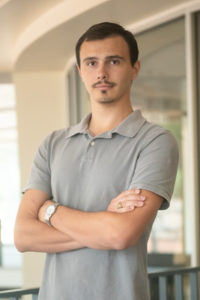 Morgan Nasser
Morgan Nasser
The Melconian group is developing TAMUTRAP, the largest Penning trap in the world, to be used for T=2 ß-delayed proton emission studies. This will serve as a probe of the fundamental structure of the electroweak interaction in the Standard Model. Mr. Nasser is concluding studies regarding ion motion manipulation and mass measurements, as well as the development of programs pertaining to them. Going forward, he'll be continuing the simulations for 32Ar experimentation in preparation for the main experiment. You can download a poster on Nasser's research.
 |
Thomas Onyango
Thomas Onyango was a graduate student at Texas A&M University. Onyango graduated from the University of North Texas in 2018 with a B.S. in physics minors in both engineering technology and mathematics. His undergraduate thesis focused on possible entropy production from quantum mechanical measurements that would not be represented by thermodynamics. Onyango began studying Texas A&M during an REU for the Cyclotron Institute with Dr. Rapp in 2017 and began working in 2018. In his work with Dr. Rapp, Onyango assisted him with the parameterization of the rho meson spectral function in hot, dense matter. Currently under Dr. Rapp, Onyango is using Dr. Bonasera's transport codes to analyze Ca40-Ca40 collisions to analyze the evolution of fireballs over time and space. |
Bryan Orabutt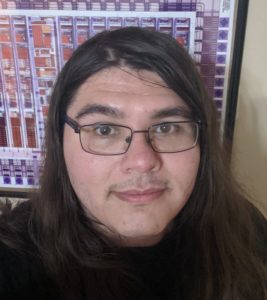
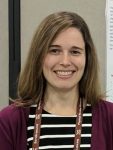 Cody Parker
Cody Parker
Cody Parker was a postdoctoral research associate at the Cyclotron Institute in Prof. Greg Christian’s group. She was working with CENTAUR-affiliated graduate students and faculty on prototyping a new fast neutron detector. The goal of the highly-segmented design is to achieve position resolution of about 1 cm without sacrificing timing, energy resolution, or efficiency. A detector with these capabilities will be beneficial for applied nuclear science, such as measuring fission neutron cross sections or as a portal monitor. Basic nuclear physics will also be explored, including reactions relevant to nuclear astrophysics or neutron decay of isotopes off of the line of stability, such as 6He. You can download a poster of her research here.
Jesus Perello was a graduate student at Florida State University working with Dr. Sergio Almaraz-Calderon. During his PhD, he worked on characterizing and developing the CATRiNA neutron detector system for reactions relevant in nuclear structure and nuclear astrophysics research. Currently he is a postdoctoral research associate in the Space Science and Applications (ISR-1) group within the Intelligence and Space Research Division at the Los Alamos National Laboratory. At Los Alamos, he works on characterizing and developing a neutron detector system for active neutron interrogation using organic scintillators, as well as characterizing the neutron environment in space near low-Earth orbit with inorganic scintillators.
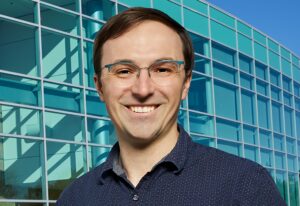 |
Cole Pruitt
Cole Pruitt is a staff scientist in the Design Physics Division at Lawrence Livermore National Laboratory. His recent work includes scientific code development on the Selene physics library, uncertainty quantification for optical potentials, and support for LLNL’s International Assessments program. He was supported by CENTAUR while a PhD student at Washington University in St. Louis, where his research included neutron total cross sections measurements at the Los Alamos Neutron Science Center (LANSCE) and advancing the Dispersive Optical Model (DOM). CENTAUR members can reach him at pruitt9@llnl.gov. |
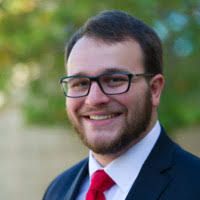 Craig Reingold
Craig Reingold
Craig was a graduate fellow at the University of Notre Dame, under the advisement of Prof. Anna Simon. He received his undergraduate degree at Rutgers University, where he performed research with neutron spectroscopy. His current research interests revolve around indirect measurements of reaction cross sections relevant to nuclear astrophysics. The topic of his thesis is using particle-γ coincidence measurements to study neutron capture reactions indirectly.
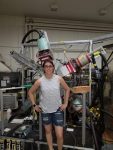 Elizabeth Rubino
Elizabeth Rubino
Elizabeth Rubino was a graduate student working under Dr.Sam Tabor at Florida State University's John D. Fox Superconducting Linear Accelerator Laboratory. Her studies include nuclear structure of 41^K and 41^Ca using gamma spectroscopy. She is also studying spontaneous fission fragments of 248^Cm and induced fission fragments of light beams on 242^Pu using gamma spectroscopy. You can download a poster on Rubino's research.
Naomi Schroeder
Naomi is a Senior Member of Technical Staff at Draper Lab, where she works on radiation effects in the Contested Environment Test Solutions group. Previously she received her MS as a member of Dan Melconian’s group at the Texas A&M Cyclotron Institute. While there, she evaluated the requirements of the TAMUTRAP system for high-precision measurements of ß-delayed proton decays to measure fundamental symmetries.
Dustin Scriven

Dustin Scriven was a graduate student at Texas A&M University who worked under Dr. Greg Christian at the TAMU Cyclotron Institute. In collaboration with others, he and his colleagues were working on the development of a highly segmented fast neutron detector. They hope to use this detector to investigate nuclear structure and processes for neutron and multi-neutron emission from nuclei. Dustin performs simulations for the detector and is also involved in prototyping. He is also interested in the deep relationship between nuclear physics and astrophysics. You can download a poster of his research here.
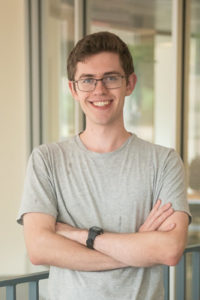 Maxwell Sorenson
Maxwell Sorenson
Maxwell Sorensen was a chemistry graduate student at Texas A&M University, working in Dr. Sherry Yennello’s group. He graduated from Washington University in St. Louis in 2018. His undergraduate research was with Demetrios Sarantites on lifetime measurements of heavy fission fragments using the doppler shift attenuation method. His research focus is on the measurement of the photon strength function of 60Fe using 59Fe (d,pγ) 60Fe as the probe. Other research interest is the nuclear caloric curve probed using quasi projectiles produced in heavy ion collisions. You can download a poster on Sorensen's research.
Eli Temanson

Eli Temanson was a graduate student working with Ingo Wiedenhöver at Florida State University's John D. Fox Superconducting Linear Accelerator Laboratory. His research includes the upgrade development of ResoNeut, an array of low energy neutron detectors for astrophysically relevant reactions in inverse kinematics.
Taylor Whitehead
Taylor Whitehead is a postdoctoral researcher at FRIB in the group of Filomena Nunes. Taylor's background is in the development of modern nucleon-nucleus optical potentials from chiral effective field theory. At FRIB, Taylor looks forward to continuing his work in reaction theory by collaborating with Filomena in developing theoretical tools to study direct reactions and make connections to FRIB experiments.
CENTAUR Affiliates:
 |
Aaron Couture Aaron Couture is engaged in the experimental study of neutron capture by hook or by crook. Neutron capture is responsible for the production of almost all of the observed elements heavier than iron. Nuclear waste transmutation concepts rely on neutron capture to reduce long-lived radionuclide inventories. Nuclear forenics relies on understanding neutron reaction networks. Where possible, these reactions are measured directly with neutron beam facilities such as LANSCE at Los Alamos. These measurements are complemented by nuclear structure studies on rare isotope beams. This structure information is used to inform and guide nuclear reaction modeling use to predict neutron capture reaction rate predictions off stability. You can also download a poster on his research here: 'Nuclear Science at LANSCE'. |
 |
Shea Mosby Neutron-induced reactions play an important role in nuclear technology and national security fields such as stockpile stewardship. Physics quantities of interest include neutron-induced fission cross sections, the fission total kinetic energy release and fission fragment mass distributions. Mosby and his team are developing an instrumentation suite which, when combined with the neutron beams available at the Los Alamos Neutron Science Center, will provide next generation experimental constraints on these quantities. Neutron-induced reactions on short-lived nuclei are an additional area of interest which pose unique challenges and preclude many of the traditional experimental techniques. His work also includes investigating both indirect probes of the reaction mechanics and the feasibility of directly studies of neutron-induced reactions in inverse kinematics. You can also download a poster on his research here: 'Nuclear Science at LANSCE'. |
